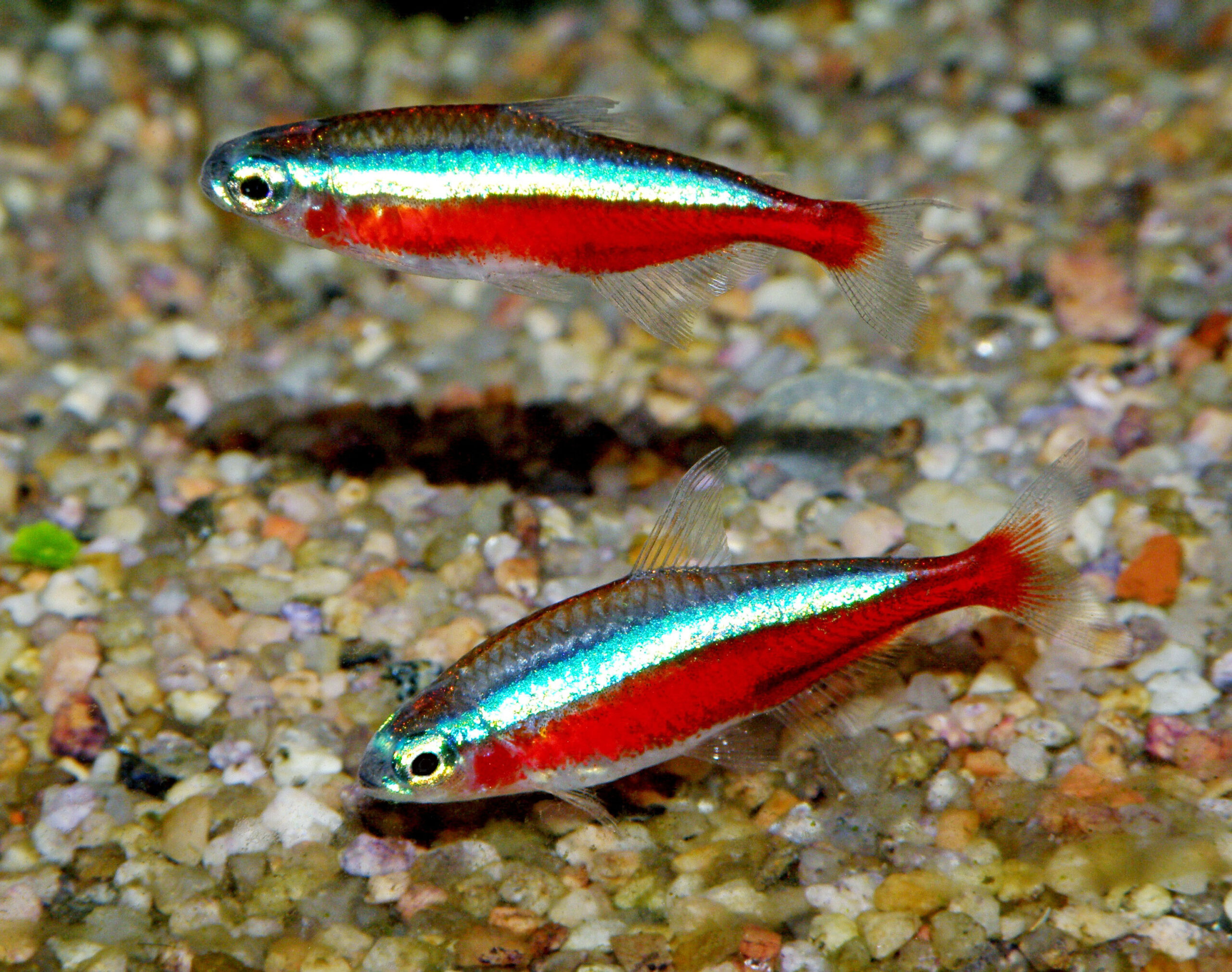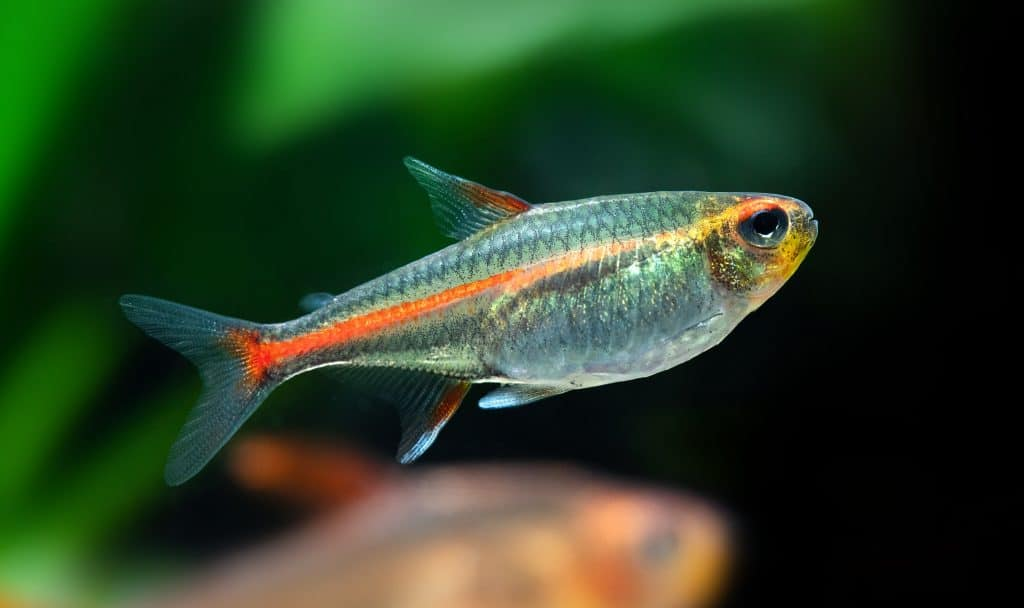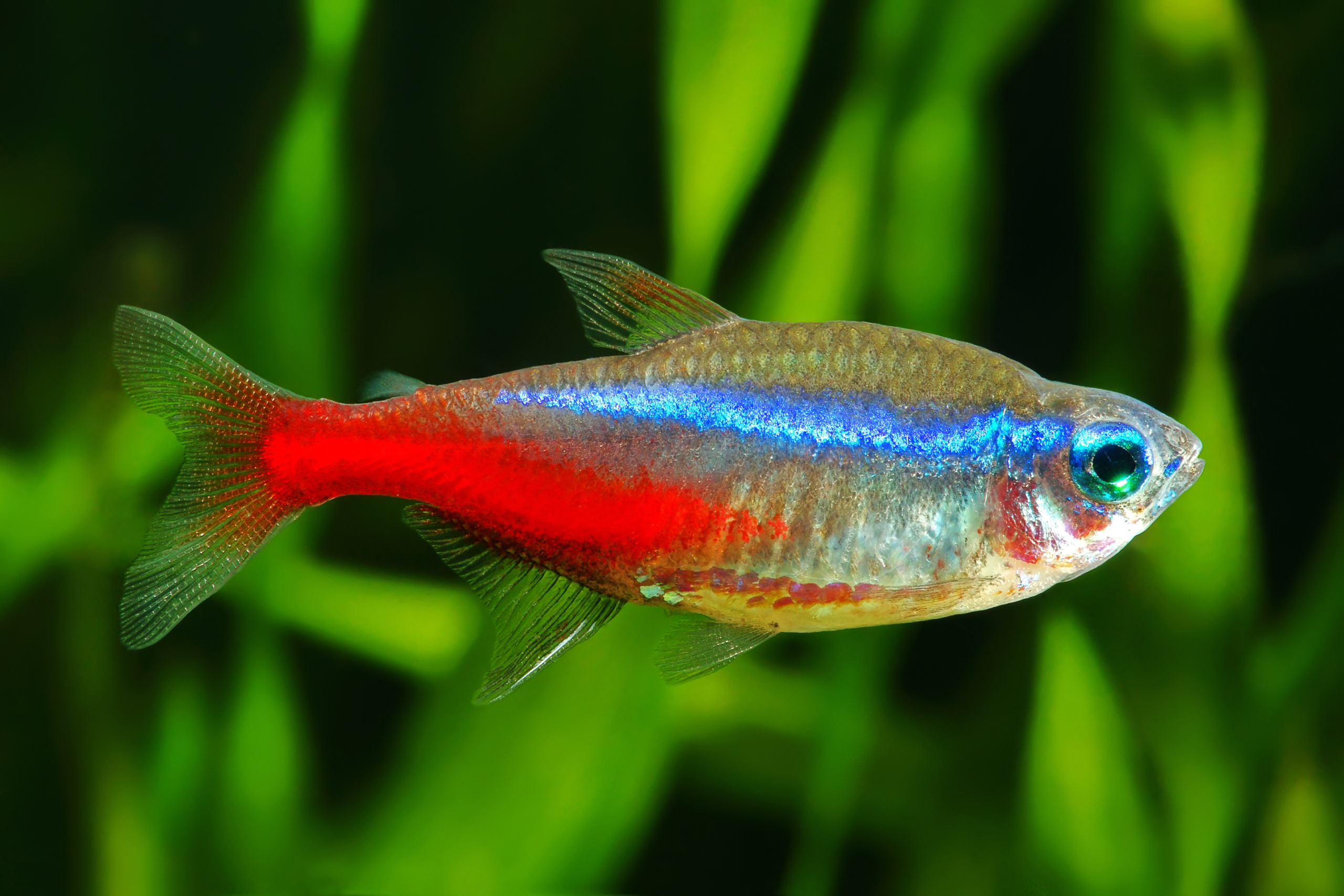The males of this predator can reach an impressive length of 30 centimeters. The females generally remain somewhat smaller. If you look at the Aristochromis christyi from the front, you will see that they are strongly laterally compressed.
The females are brown/gray in color and have a diagonally ascending black stripe across the flank, from the center of the caudal peduncle to just beyond the base of the dorsal fin. A second black line runs across the back at the base of the dorsal fin. Dominant males show a blue-greenish color, with the black bands that females and subordinate males show having almost completely disappeared. In males, the anal fins show an orange-red color, just like the underside of the caudal fin.
The difference between males and females is difficult to see when they are still young. This is also difficult to see in adult female and young non-dominant males. The adult males also develop tapered dorsal and anal fins later on. The males can show considerable aggression towards each other. It is, therefore, better to keep only one male with several females.
Biotope
This large Malawi cichlid can be found throughout the lake, albeit infrequently. Depending on the location, they occur in the transition zones from rocks to sand at depths of 2 to about 10 meters. Here they hunt Mbunas about two to eight centimetres in size. Although they are found all over the lake, there are no local colour variants.
Diet
Since they are hunters, feed fish would be best, but you will soon run out of them unless you have a lot of tanks. You can also feed them with fish meat, shrimp and mussels.
As you build your fish stock, keep in mind that this great hunter will eventually catch anything that fits in its mouth.
The Aristochromis christyi is not a fast swimmer and has developed a special hunting technique. As soon as they spot prey, they turn over on their side. They keep an eye on their prey with one eye and lower motionless towards their prey. Once they get close enough, they snap at the prey with a quick sideways movement. This method is similar to that of Tyrannochromis macrostoma and Exochromis anagenys.
The Aquarium
Because Aristochromis christyi is not a fast swimmer, you can deviate from the rule 10 x the length of the fish. However, at a minimum, an aquarium of two meters in length is required for one male with two or three females.
They are rather large fish that handle their food very carelessly, which causes quite a lot of pollution. They are prone to getting sick because of poor water parameters. Make sure that no food is left lying around and change the water regularly. At least 50% once every two weeks.
Keep the nitrite and ammonia levels at 0. pH around 7.5 to 8, as usual for Malawi cichlids, the GH between 12 and 16 and the temperature between 24 and 27 degrees Celsius. Also, ensure a low nitrate value!
The aquarium can be set up with a sand bottom. Provide plenty of rock formations with burrows where the females can retreat to the attention of the male. They can also show their hunting technique between the rocks.
Breeding aquarium and conditioning
Breeding this large predator does not require a special aquarium. As long as the aquarium has a sandy bottom and rocks, they can also be stimulated to breed in a mixed aquarium. For a breeding group, a ratio of one male to three to four females is ideal. This spreads the male’s attention over several females and makes sure they don’t succumb to the male’s constant advances.
Getting the females to mate can be a bit more challenging than with most other Malawi cichlids. Two feedings a day seems to work best. Also occasionally giving them some live food will get them in shape faster.
The spawn
Before spawning, the male digs a shallow hole in the sand, above which he shows his best side to the females. If a female is ready to spawn, she will report to the pit. The couple circles around each other, with the male showing the egg spots on his anal fin as a distraction as he fertilizes the newly laid eggs. After this, the female takes the eggs in her mouth to incubate them.
Raising the fry
The nests of Aristochromis christyi do not get big. They usually consist of about 15 to 50 fry. The eggs are therefore quite large. Depending on the temperature and amount of fry, they are released after three to four weeks. You can start feeding the fry right after they are released. Live or frozen food such as brine shrimp, cyclops or daphnia, as long as it fits in their mouths. In the weeks after being released, the young can still return to the mother’s mouth as soon as danger threatens.
The father plays no part in raising the fry, other than that he is a danger, so that they have to take shelter in the mother’s mouth.
Once the young are big enough to take care of themselves, they are no longer taken back in the mouth by the female.




Reviews
There are no reviews yet.